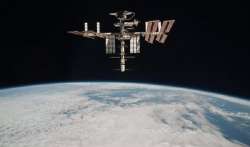Scientists develop first global map of distribution of atmospheric ammonia
Atmospheric ammonia merits particular attention because it breaks down into fine ammonium salt particles that degrade the quality of the air we breathe.

Scientists have developed the first global map of the distribution of atmospheric ammonia, and catalogued over 200 sources of the gas, two-thirds of which had never been identified before. Researchers at The French National Centre for Scientific Research (CNRS) analysed measurements taken by satellites between 2008 and 2016.
The Infrared Atmospheric Sounding Interferometer (IASI) allowed them to catalogue more than 200 ammonia (NH3) sources, two-thirds of which had never been identified before.
These sources are essentially sites of intensive livestock production and industrial activity, according to the findings published in the journal Nature.
For the last 12 years, the IASI interferometer on board three successive satellites have provided scientists with global data on various atmospheric components, including ammonia.
Atmospheric ammonia merits particular attention because it breaks down into fine ammonium salt particles that degrade the quality of the air we breathe.
Yet the processes regulating concentrations of this gas are still poorly understood, especially on the local scale.
Using the daily data on ammonia levels recorded by the interferometers over a period spanning nearly ten years, the researchers generated a map of the global atmospheric distribution of ammonia whose resolution is on the order of a square kilometre.
By combining their map with satellite imagery, they uncovered and categorised 241 point sources of anthropogenic NH3 emissions -- 83 linked to intensive livestock production and 158 to industrial activity -- as well as 178 wider emission zones.
In addition to recording new sources not found on current emission inventories, the study has shown that levels of emissions from previously identified sources are greatly underestimated.
By observing changes in the data over time, the team was also able to trace developments of the associated human activities, like the start-up or shutdown of industrial complexes or the expansion of infrastructures for intensive animal farming.
These findings suggest that better management of the impact of ammonia pollution requires a comprehensive review of ammonia emissions, which are much higher than presently suggested by inventories.